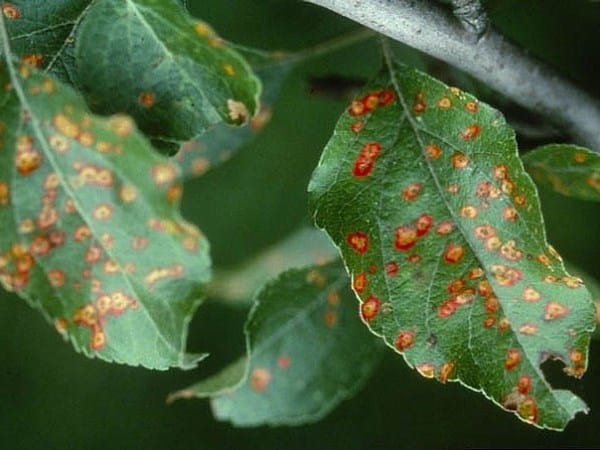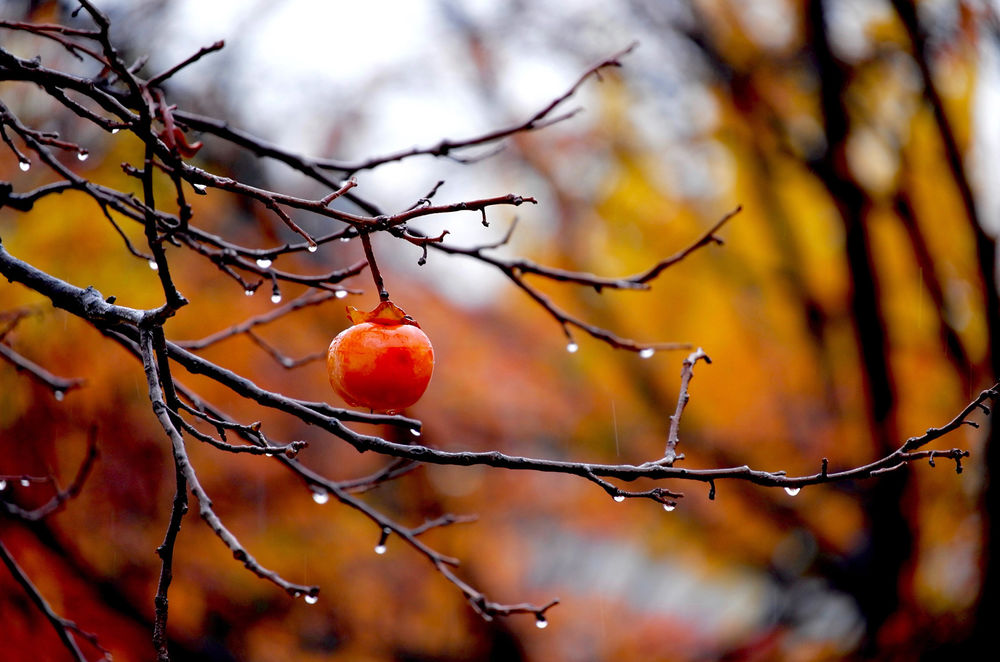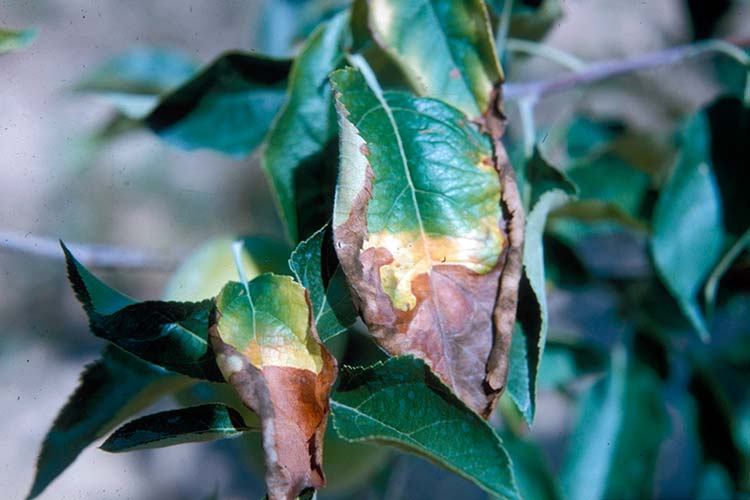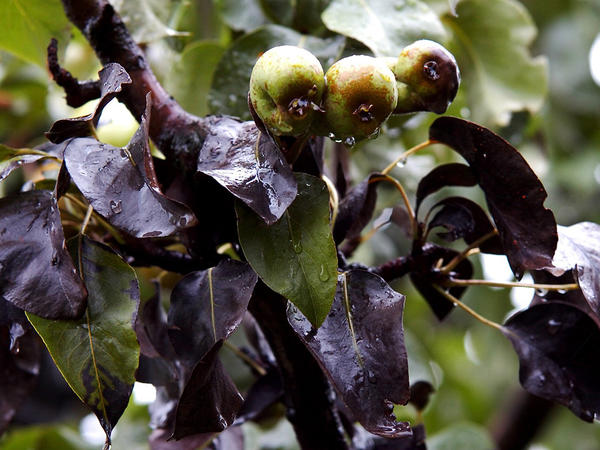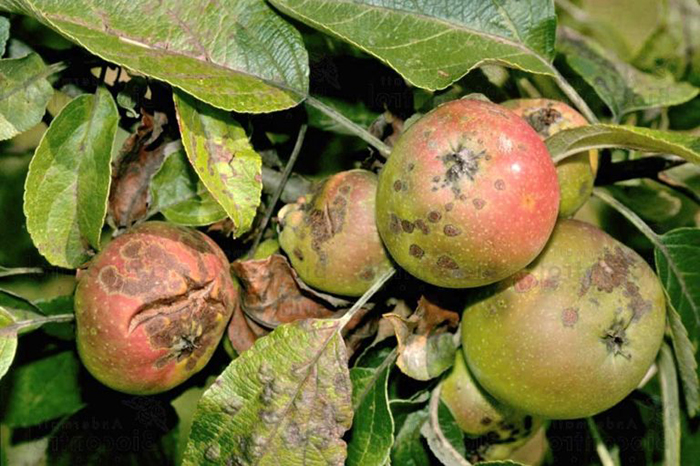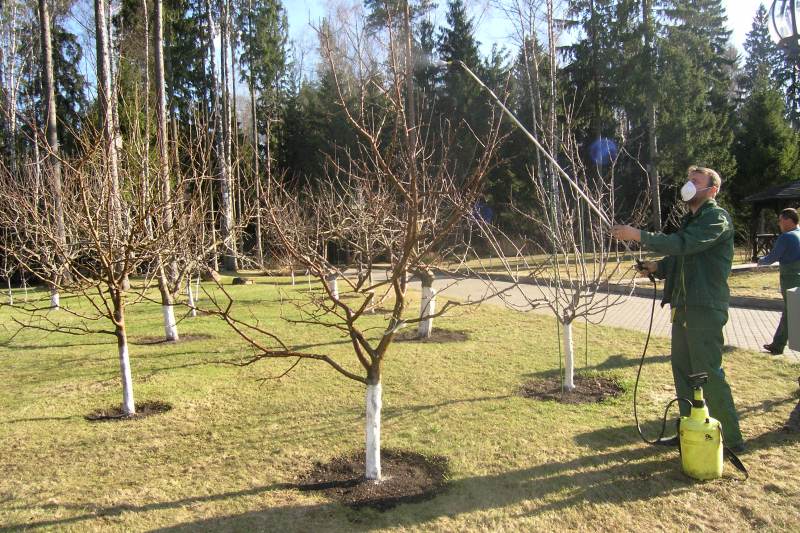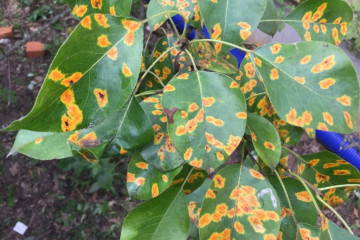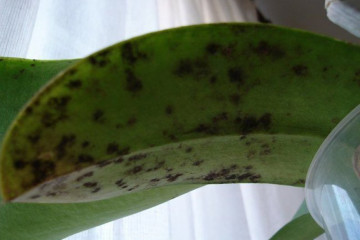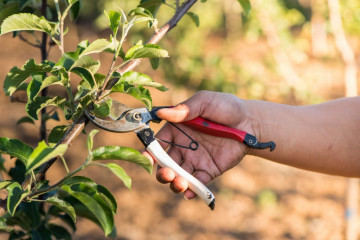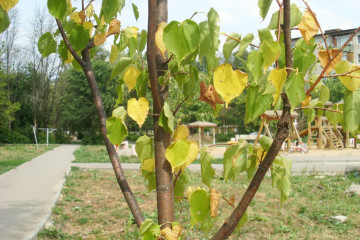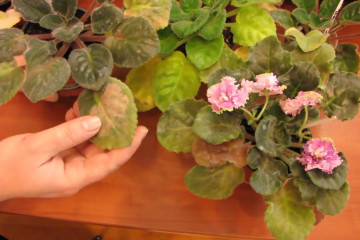Brown spots on apple leaves: how to treat
Content:
Brown spots on the leaves of an apple tree are a symptom that is alarming, since it indicates that something is wrong with the plant. There are many reasons for the appearance of stains, and before proceeding with the treatment of the tree, it is necessary to determine why the stain has occurred.
What are brown spots on the leaves, what do they look like
On the leaves of an apple tree, spots of a deep brown shade can have a different shape - round, columnar or oblong, sizes can be large or in the form of small dots. Spots can appear immediately extensive, or at first they are small specks, which gradually grow and merge together, completely filling the sheet with themselves. Spotting is sometimes seen along the edges of the leaf or in the center. The features of the manifestation of spots depend on what disease provoked their occurrence.
Causes of the symptom
On an apple tree, brown spots do not appear just like that. Their manifestation indicates that the tree is experiencing discomfort, it is affected by a fungus, infectious pathogens and other pathologies.
Weather
The spots do not always indicate that fungi or pests have attacked the apple tree. Sometimes this symptom is the result of unfavorable weather conditions:
- prolonged spring frosts;
- lingering rains;
- insufficient sunlight.
In most cases, this situation is typical for trees that grow in the northern regions.
Black cancer
Cancer is one of the most dangerous, but rather rare diseases, which, without timely assistance, leads to the destruction of the tree. Characteristics of black crayfish on an apple tree:
- Weakened plants with cracks in the bark and with frost cracks are susceptible to the disease. More often, pathology occurs on trees in the southern regions.
- Spotting affects foliage, fruits, twigs and flowers, but is more affected by bark cancer.
- First, brown spots appear, the crust begins to crack, on which hard tubercles form. After a while, the bark breaks off, the exposed parts of the wood have a burnt appearance.
Lack of minerals, copper
An improperly chosen place for planting a plant, soil containing few mineral elements, negatively affects the condition of the tree. The foliage begins to become covered with a brownish bloom, after which it withers and falls off.
Lack of fertilizers and fertilizing
For the normal development of the tree, it needs regular feeding. Due to the lack of fertilizers, the leaves dry up, at first they begin to turn yellow, then turn brown.
Powdery mildew
If the leaves of the apple tree dry and turn brown, these symptoms may indicate the development of a fungal disease - powdery mildew. Typical manifestations:
- foliage curls, becomes covered with a gray bloom;
- pathology develops rapidly, the leaves dry out quickly;
- young branches are underdeveloped, stop growing;
- if the buds are infected with a fungus, the ovaries are not formed;
- the yield decreases significantly and the quality of the fruit deteriorates.
Necrosis or bacteriosis, fire blight
Bacteriosis or fire blight is a relatively new disease that was introduced from Europe in 2009 and is actively developing in the southern regions. Carriers are birds, insects, and the disease is also transmitted by the wind. Features of manifestation:
- The spread of the disease occurs through the juice-conducting channels with rapid infection of soft tissues.
- On the foliage, spots of a reddish hue are formed, which are located between the leaf veins.
- A distinctive feature of the spread of pathology is from top to bottom. New shoots first dry at the ends, then wither along the entire length.
- White discharge appears on the bark, which gradually turns brown.
- Flowers and buds dry up and die off.
- A sticky coating develops on the fruit, after which they mummify and turn black.
Brown spot (phyllostictosis)
Apples and pears are susceptible to this disease. Symptoms are dark gray and brown spots, in the center of which are black specks. The tissues affected by the spotting gradually die off, and the epidermis peels off.
The mottling appears on trees that are in high humidity conditions and those that grow in neglected, dense plantings.
Sooty fungus
The main characteristics of the disease:
- The fungus affects foliage, fruits and bark.
- Some parts of the tree turn black, as if the plant was sprinkled with soot.
- Damaged foliage loses its ability to assimilate, the plant becomes too sensitive to a drop in temperature.
Fruit rot (moniliosis)
The disease in most cases occurs on apple seedlings and young branches of mature trees. Signs of the spread of moniliosis:
- At the initial stage, the leaves turn brown and dry out. This happens with ovaries, branches and flowers.
- In the second stage, when apples are formed, the disease spreads to them.
- The fruits rot.
The effect of rust on the growth and development of an apple tree
The foliage of the apple tree begins to rust gradually. The pathological process occurs in several stages:
- With the onset of autumn, fungal spores germinate, forming a mycelium.
- Teliospores are formed in the mycelium, from which the fungus spreads through the leaves.
- Spots appear on the foliage, which, without timely treatment, gradually increase and fill the entire leaf.
The fact that the leaves begin to turn red should not be ignored.Even if the lesion is first noticeable on single leaves, the disease will spread very quickly, and most of the crown will dry out in a short period of time.
Red leaves are not only unaesthetic, the fungus negatively affects the growth and development of the entire tree, especially if it is in a period of active formation. The consequences of spotting on a plant:
- When the leaves begin to turn brown, the process of photosynthesis is disrupted in them, which affects the state of the entire tree.
- There are negative changes in metabolic processes.
- Affected leaf plates cannot absorb the proper amount of moisture required by the tree, the water balance is disturbed.
The plant is experiencing an acute shortage of minerals and vitamins, the growth of the tree stops.
How leaf damage affects the crop
Rusty leaves can dry out quickly and fall off. Because of this, the main vital processes of the tree are disrupted and then stopped. As a result, the quantity and quality of the crop is significantly reduced.
Treatment methods
The fight against fruit tree spotting should begin immediately, as soon as its first manifestations have been noticed. Spots can spread throughout the tree in a matter of days, and it will become a source of infection for other garden and garden plants.
Traditional methods are used to cure spotting, but they are only effective in the early stages. Specialized drugs are also used.
Copper preparations
Preparations for eliminating spotting are selected depending on what stage the disease is at, how deeply and extensively pathogenic spores have penetrated into the plant.
Copper preparations are among the most effective and safest. Recommended remedies:
- Bordeaux liquid is a classic drug used to eliminate powdery mildew, black cancer, at an early stage of fungal diseases. One spraying is enough for about 1 month.
- Pure color is a copper-based fungicide, an analogue of Bordeaux liquid.
Sulfur preparations
Sulfur-based products quickly eliminate pathogenic fungus, but their disadvantage is that they have a short duration of action (from 7 to 14 days), and they are washed off the leaves even faster from moisture, rain, fog.
Of the sulfur-containing fungicides for apple trees, experts recommend such as Tiovit, Serkadis, Cumulus. They must be used strictly in accordance with the instructions and the dosages indicated in it. Processing is carried out before and after flowering.
Agrotechnical measures
In order not to look for ways later than to treat brown spot on an apple tree, you need to take preventive measures to protect garden crops. Once the spot appears, it will reappear, and therefore it is important to keep an eye on the plants at all times. The following recommendations will help keep the trees healthy:
- It is important to maintain a distance of about 3 m between fruit trees. In dense thickets, the fungus appears more often and spreads faster.
- You should choose the right place for seedlings. For planting, areas protected from drafts are suitable, and the soil should be nutritious, enriched with mineral elements in order to make the plant stronger and increase its resistance to various diseases.
- Planting fruit trees begins with the introduction of suitable fertilizing into the hole.
Folk ways
If the leaves on the apple tree began to wrinkle, become covered with spots, you need to deal with such manifestations immediately. Folk recipes based on natural products give a positive result only in the early stages of the disease, they are also used as a prophylaxis. Recommended remedies:
- Horsetail decoction - pour ½ bucket of collected raw materials with clean water, bring to a boil. Infuse for 24 hours. Strain before use. The prepared liquid is applied to the foliage through a spray bottle.
- Iodine solution - pour 10 ml of alcoholic iodine tincture into 10 liters of water. You need to process the leaves with the product three days in a row.
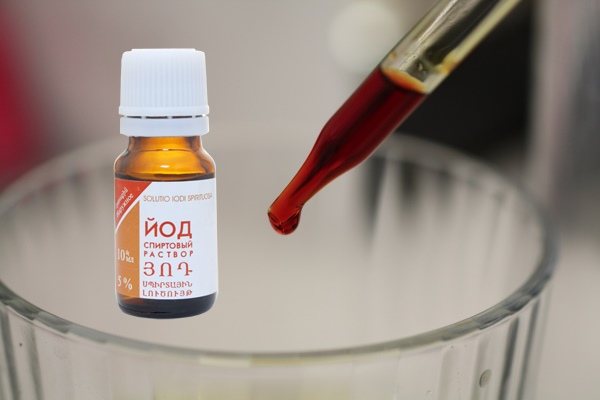
To make folk remedies more effective, it is recommended to use them once every 2 weeks, without waiting for the leaves to start turning brown again.
Preventive protection and control methods
The best prevention of spotting on an apple tree is adherence to proper agricultural practices and regular plant care. Spotting prevention includes:
- regular thinning of the crown;
- loosening the soil under the tree to improve the flow of oxygen to the roots;
- disinfection of the tree, which is carried out in the first days of spring and in the last days of summer - 600 g of urea is dissolved in a bucket of water, the branches and the trunk are lubricated with the resulting liquid;
- cleaning of fallen leaves and fruits.
If spotting has appeared on a tree at least once, once a year, in early spring, it is necessary to prophylactically spray the plant with fungicides or folk remedies.
Spotting on an apple tree is an alarming sign that requires an immediate response. Timely measures taken will help restore the tree, preserve its yield, taste and benefits of the fruit.
